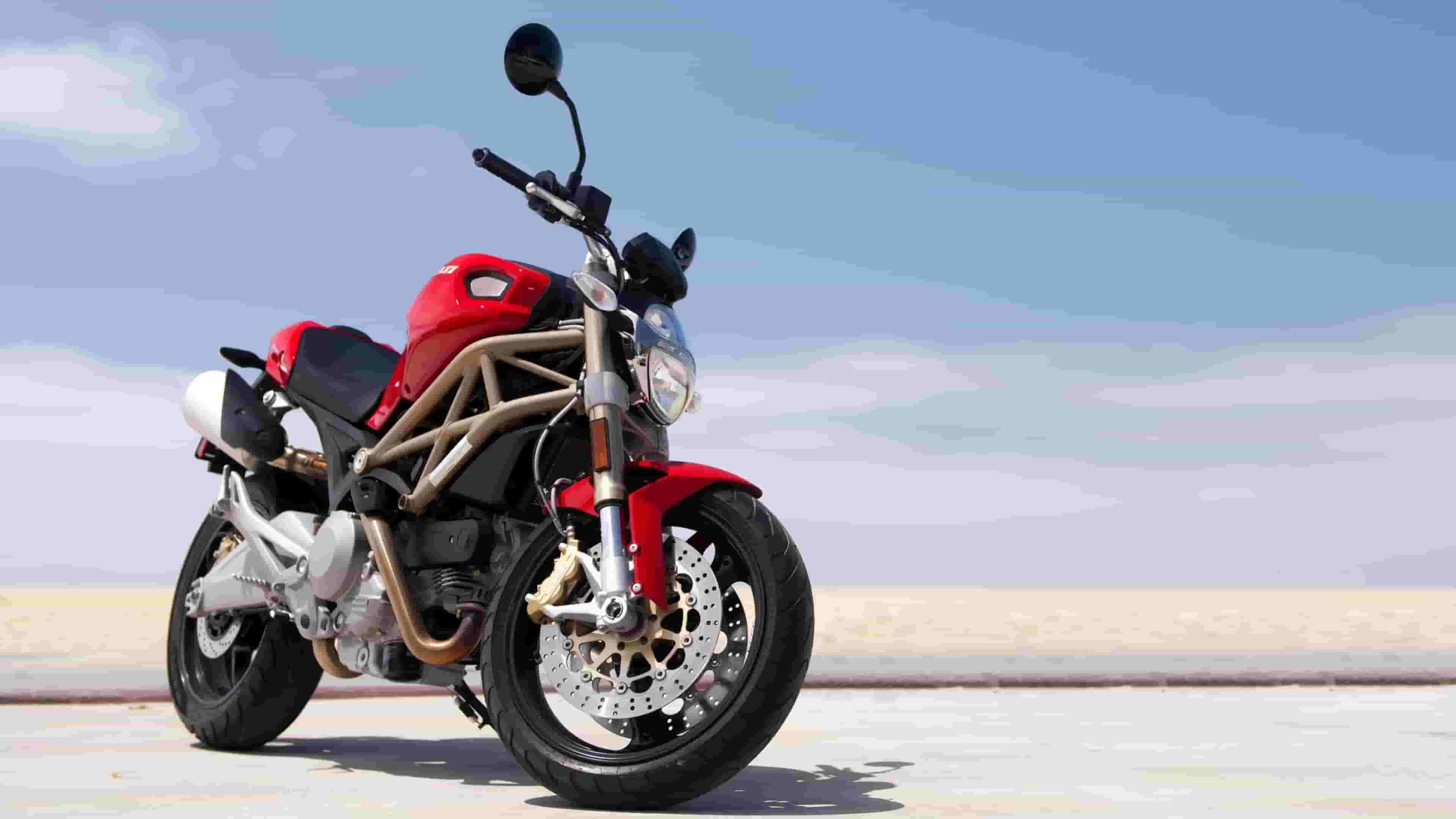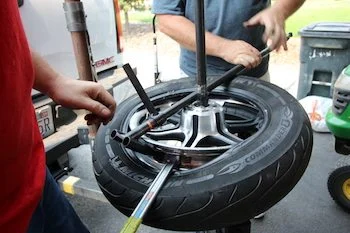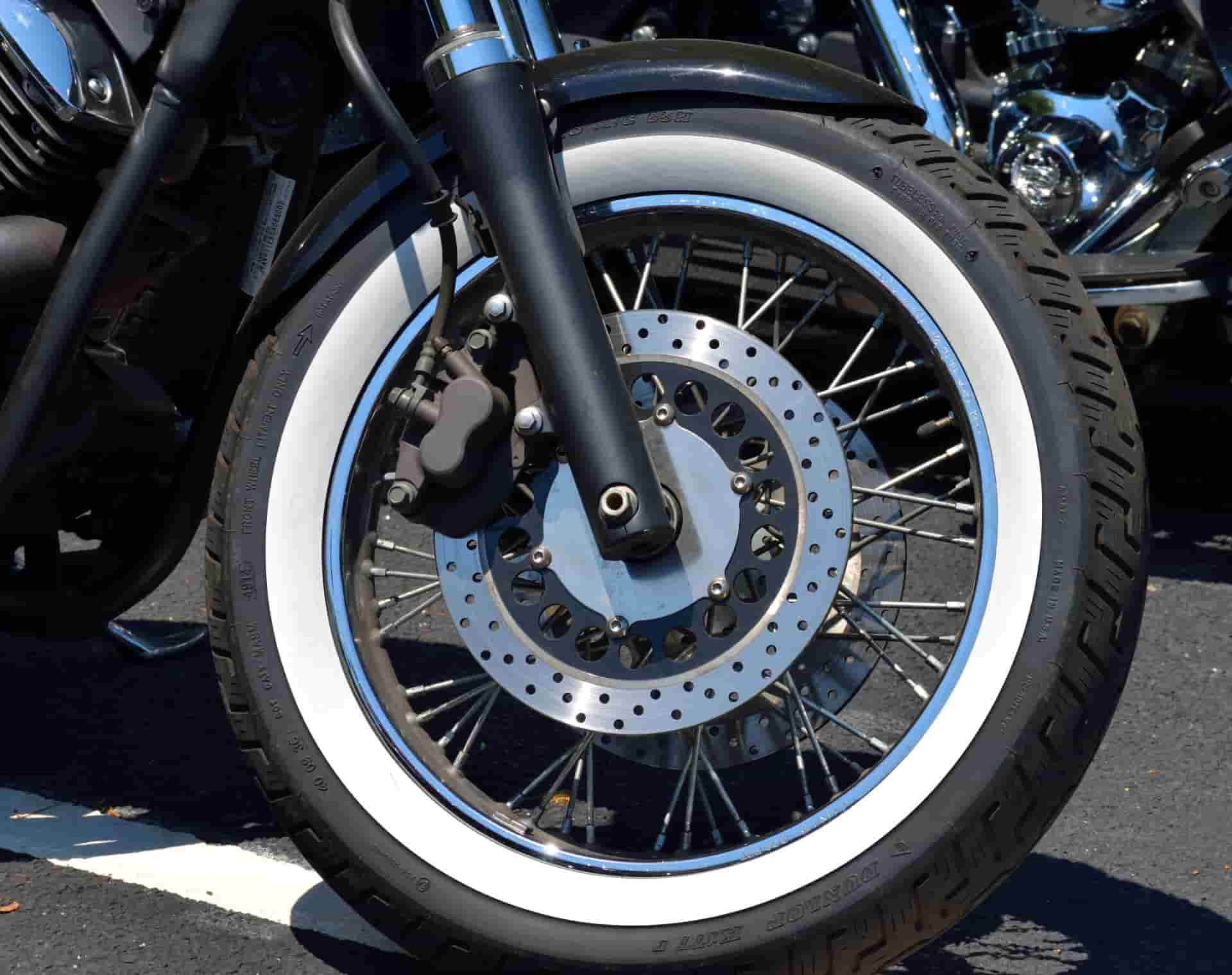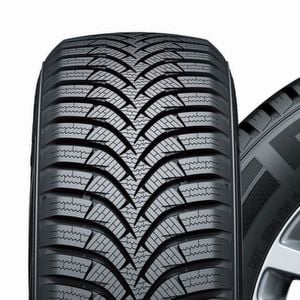Last Updated on 06.08.2024 by hrushetskyy
What kinds of tires do I need for my motorcycle?
More than just mere black rubber hoops protecting your wheels from crushing against the road surface, motorcycle tires provide traction technology that continue to get better by the year.

Tires work by allowing air cushion between your motorcycle and the surface, thereby giving the tire its form while allowing the same to mesh with the surfaces and absorb humps.
Listen closely to what your tires are saying while you’re riding them. If the braking and the cornering feels heavy, or if the steering feels odd, there is a very high probability that your tires are flat. Pay close attention to the feel of the bike while you’re riding. If steering seems odd or mushy, or if cornering and braking response feels heavy, there’s a good chance your tires are underinflated. Shaking or tremble may also indicate a drip or tire impairment. It is important to pay attention to the choice of the manufacturer’s brand. In this case, it is better to look at brands specialized in the production of motorcycle tires, such as Maxxis tires.
If you ask “what kinds of tires I need for my motorcycle,” there is still more left to be learned before we can give a definite answer to this question.
Tire Sizes and What do they mean


The image at the top shows two tire sizes you might encounter. Let’s discuss further what these numbers and letters mean.
130/90, the first tire size shown on the picture, is a common tire size for Harley-Davidson. The numerator here indicates the width across the face of the tread, expressed in millimeters. Each tire manufacturer varies their width slightly, so you can say that the width of the tire may not be identical from one brand to another. Furthermore, the tire’s profile curvature can also be a factor affecting the overall measurement. Nevertheless, as long as you stick to the stock sizes, the tolerances are near enough to make one fit where the other goes.
MT90 – 16 Load Range B, the second tire size shown in the example, means that the motorcycle tire has an aspect ratio of 90.
To elaborate further, M means “motorcycle.” T stands for the width, while the number represents the aspect ratio.
The tire’s aspect ratio is the sidewall height, presented as the tire’s width percentage. Hence, in the example above, the tire’s sidewall height is 90 percent X 117 mm or 130 mm.
Next to the aspect ration is the rim size shown in inches. If this tire is radial, instead of “B,” we would see “R” on the part which segregates the rim size and the aspect ratio. In this case, since you see a “B,” this means that the tire is a “bias-ply tire.” This means that this particular tire is made for a 16-inch wheel.
Aside from the aforementioned, other information shown include load ranges and speed ratings. The former shows the ceiling weight a tire can carry, leaving the latter as the maximum speed at which the ceiling weight can be carried.
With these, answering the question “what kinds of tires I need for my motorcycle,” becomes a bit easier now that we have established a few necessary factors to be considered and checked.
What are the main determinants of motorcycle tire size?
There are five major factors that needs to be considered when identifying the right and ideal motorcycle sizing:
- width,
- aspect ratio,
- tire construction,
- speed rating, and
- rim diameter.
What are the other factors used to determine tire size?
- WW: White wall tire
- TT: Tube-type tire (requires inner air tube)
- TL: Tubeless tire
- M/C: Motorcycle tire (in other words, for motorcycles only
Motorcycle Sizing 101
There are numerous factors that should be considered when finding the right motorcycle tire size. These factors are very important because they will highly affect the safety and performance of your bike. While there are many elements to consider, choosing the right tire for you bike should not be complicated.
There are five major factors that need to be considered when identifying the ideal motorcycle tire size: width, aspect ratio, tire construction, speed rating, and rim diameter.
Motorcycle tire width

The number or the letter in a specific tire size shows the nominal width. As mentioned above, this is measured in a straight line starting from the furthest part on one sidewall, across the tread, up to the furthest point on the opposite side.
Should you have questions in determining this measurement or as to whether or not a smaller OEM tire will fit your bike, it is highly encouraged to call Tech Service.
The diverse size numbering systems specify widths in different sizes. You can view a width cross reference table below.
| Permissible Rim Widths | Metric | Alpha | Standard Inch | Low Profile Inch |
| 1.60, 1.85 | 70 | MG | 2.75 | – |
| 1.60, 1.85 | 80 | MH | 3.00 | 3.60 |
| 1.85, 2.15 | 90 | MJ | 3.25 | 3.60 |
| 1.85, 2.15 | 90 | ML | 3.50 | 4.10 |
| 2.15, 2.50 | 100 | MM | 3.75 | 4.10 |
| 2.15, 2.50, 2.75 | 110 | MN | 4.00 | 4.60 |
| 2.15, 2.50, 2.75 | 110 | MP | 4.25 | 4.25/85 |
| 2.15, 2.50, 2.75 | 120 | MR | 4.50 | 4.25/85 |
| 2.15, 2.50, 2.75 | 120 | MS | 4.75 | 5.10 |
| 2.50, 2.75, 3.00 | 130 | MT | 5.00 | 5.10 |
| 2.75, 3.00, 3.50 | 140 | MU | 5.50 | – |
| 3.50, 4.00 | 150 | MV | 6.00 | – |
| 4.00, 4.50 | 160 | – | 6.25 | – |
Motorcyle tire’s Aspect Ratio
The motorcycle’s aspect ratio is usually used to indicate the motorcycle tire’s cross-sectional portion.
A lower number also means a lower profile, and the height-to-width ratio (shown in percent) is used to represent this. If for instance your motorcycle tire’s aspect ratio is 90, this means that the said motorcycle tire has a cross-sectional height of 90% of its width.
If the tire has the metric, alpha or low-profile inch totaling scheme, the aspect ratio will be seen directly after the width.
Tire Construction
After the aspect ratio is the tire construction. This has two options: Radial (R) or Belted (B).
“Belted” means fiberglass, Kevlar or aramid fiber belts. These all have added strength and weight volume. But if a tire does not have (R), then it is bias-ply, which means that it has several, meeting rubber plies. These overlying layers form a dense layer that is delicate to hotness and is less elastic.
Rim Diameter
Rim diameter is the diameter of the rim/wheel on which the tire will be mounted, This is expressed in inches.
Speed Rating
A downgrade is usually a poor idea. There is a reason why manufacturer specified the maximum load and speed ratings of their motorcycles. They believe these are what the bike needs.
On the other hand, an upgrade in load or speed may appear harmless, but it can adversely affect the overall riding experience due to the stiffeners added to the tire’s sidewalls.
Factory-spec tires are capable to handle the maximum weight approved for the respective bikes to carry. If you want to exceed that, the tires and the other parts of the motorcycle might break, too!
Generally, a higher speed rating is not always damaging to the tires. However, you can choose to give up the fuel mileage or tire life span. It is highly recommended to stick to the OE speed rate. Upgrading is allowed, provided that you are knowledgeable of the other riding features that might be adversely affected.
When you consider the weight, also consider the following factors:
- Weight of the rider/driver
- Weight of the passenger
- Weight of all luggage
The downside of Japanese bike brands is that they assume that their customers — the rider and the passengers, are all lightweight.
As of now, majority of the tire manufacturers are in agreement that once repaired, the tire loses its speed rating.
Motorcycle Tire Speed, Load Rating And Tire Size
Front Tire Size Conversions |
Rear Tire Size Conversions |
|||||
| Metric | Alpha | Inch | Metric | Alpha | Inch | |
| 80/90 | MH90 | 2.50/2.75 | 110/90 | MP85 | 4.00/4.75 | |
| 90/90 | MJ90 | 2.75/3.00 | 120/90 | MR90 | 4.50/4.75 | |
| 100/90 | MM90 | 3.25/3.50 | 130/80 | 5.00/5.10 | ||
| 120/80 | 4.25/4.50 | 140/80 | 5.50/6.00 | |||
| 120/90 | MR90 | 4.25/4.50 | 140/90 | MU90 | 5.50/6.00 | |
| 130/90 | MT90 | 5.00/5.10 | 150/80 | MV85 | 6.00/6.25 | |
| 150/90 | MV85 | 6.00/6.25 | ||||
Source: Maxxis Tire School
NOTE: It is very important to always use the tire size, speed, load rating, and type recommended by your motorcycle manufacturer. The information herein provided is only for general reference and should not be made as the main basis for choosing the appropriate motorcycle tires.
The letter and number combo
The letters and numbers you see after the size of the tire is called collectively as the tire “service description.” The said service descriptions have a speed and load index.
There are additional and optional information you may see but these vary from one manufacturer to another. These are the information the tire manufacturer gives to clarify further what belongs to the tire, or what job was the tire designed to do.
It may specify a little different version of a tire that is made precisely for a certain new model of motorbike, at the motorbike builder’s demand. Michelin Pilot Road 3 Tires are a decent sample of this. The “B” service description means a tire with additional sidewall stiffeners provided.
If you are uncertain what a service description, refer to this guide for clarification.
Tire Speed Rating Chart(New Style Speed And Load Index) |
|
| Speed Rating | Max. Design Speed (MPH) |
| J | 62 |
| K | 68 |
| L | 75 |
| M | 81 |
| P | 93 |
| Q | 99 |
| R | 106 |
| S | 112 |
| T | 118 |
| U | 124 |
| H | 130 |
| V | 149 |
| W | 168 |
| Y | 186 |
Source: Maxxis Tire School
It is important to note that modern tires are rated with load index and speed rating. In a guide released by Michelin, they particularly highlighted that this code appears after the size. The code is composed of 3 characters: 1 letter and 2 numbers. Let’s say the code is 67H. 67 stands for the maximum weight capacity of the tire. H stands for the maximum speed rating.
What size tube do I need?
To know exactly what size tube you have to buy, refer to this conversion chart

What valve stem size should I buy for my tubeless tire?
There two types of valve stem: 10 mm and 8 mm. The former actually fits an 11.3 mm hole and is actually the most common one. This kind of valve stem size is used by Harley-Davidson and Japanese tire manufacturers. The latter is smaller and fits an 8.3mm opening is used by Buells, aftermarket wheels, and in some BMWs.
When should I replace my motorcycle tires?

Here’s a quick run-down of the instances when motorcycle tires must be changed:
- Tires which are broken around the circumference, often due to fluorescent or UV contact
- Tire with scratches or cuts
- Tire with misplaced tread blocks
- Tire with a hole bigger than 0.25 inches
- Tire that is making sound or showing a choppy drive; some front tire cupping is ordinary, but a damaged tire might show severe feathering
- Tire that is feathered or cupped
- Tire that is dilapidated (2/32 of an inch or less of tread in any area)
- Tire that has cross section significantly transformed (due to bumpy wear)
- Tire that has been run with exceptionally low compression (impairment is typically seen as a circumferential ring that looks “scrubbed”)
- Tire more than 10 years old
- Tire exhibiting treadwear gauges
- Sidewall perforation
- Damage that can’t be fixed
Tips to improve Motorcycle Tire Life
To extend the life expectancy of your motorcycle tires, follow these simple yet proven and tested tips to extend the life expectancy of your beloved tires.
- Avoid overloading
Like most vehicles, the motorcycle should only be loaded to the bounds set by its producer. If the motorbike is overloaded, the pointless wear and tear occurs. This greatly reduces the tire life cycle and makes it useless within a short period of usage.

2. Always remember to load at Correct Positions
Take note of the ceiling weight discussed above. Make sure that you observe the same to preserve the condition of your motorcycle.
The additional load should not be placed at either rear or front side as this will cause the unwarranted heating of tire and eventually causes tire catastrophe. The tire life is greatly reduced due to incorrect assignment of additional load.
3. Avoid over inflation of tires
There is a fallacy in the minds of the public that extra weight in the tires also permits the adding of extra weight on the bike.
The truth is that added blow up of the tires do not get additional capacity to bear extra load and neither do they become sturdier. Ultimately, the additional inflation and load makes the tire inoperable.
Share the Knowledge
